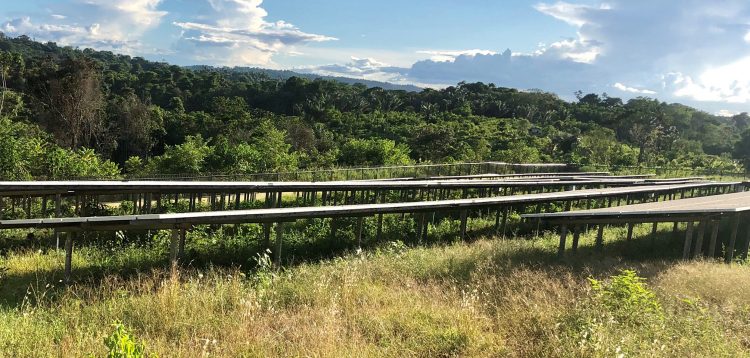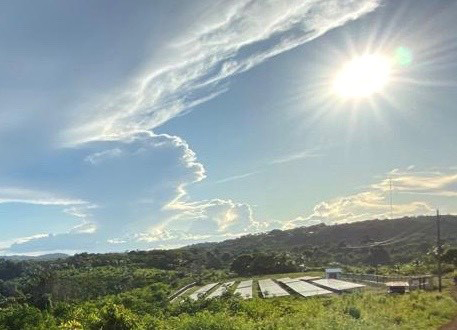Residents of Mabaruma in Region One are disappointed that the 400 KW solar farm project got damaged by lightning even before they had a chance to enjoy the improved electricity they were promised.
They told Stabroek News (SN) that they were eagerly awaiting the completion of the project, which started in 2017, so that it would ease their electricity woes.
They are currently receiving limited hours of electricity every day; from 5 am to 8 am and from 5 pm to 12 midnight.
The mega solar farm project in the northwest was implemented by the Ministry of Public Infrastructure (MoPI) at a cost of almost $228M. A German company, Meeco won the bid for the contract and started construction of the farm in 2017.

The project was expected to be completed in 2018 to provide at least a 17-hour electricity supply to the 3,000 Mabaruma residents.
Acting town clerk, Maria Basheer told SN that there was a trial run of the project for about one month and during that time lightning caused the transformer to be damaged.
She said this was as a result of a defective installation. The earth wires were also not grounded properly.
According to her, the ministry was unsuccessful in getting the contractor to rectify the problem.
During a visit to the area last weekend, SN observed that the electrical power also comes with low voltage and was not enough to power the air conditioning (AC) unit in the hotel room.
An attempt to turn the AC on in room caused the lights to go dim and even cut off.
Generators are activated during the prolonged blackouts but at times they would be shut down for maintenance.
Residents said they have also been experiencing power fluctuations but thankfully, they are still able to use their fridges and freezers and other small appliances. Most of them have generators to back them up during the blackouts.
Basheer said the solar farm is expected to “store energy to the power plant and then distribute to the electricity grid.”
During the trial period, she said, residents benefited from an increase in the hours of electricity supply, mostly during the morning hours.
She said the solar farm is intended to be a backup for the power station so as to conserve on fuel and have a safer environment.
In the 2016 budget, Minister of Finance Winston Jordan had said that there was an allocation of almost $1 billion to implement a series of renewable energy and energy efficiency projects, through the Guyana Energy Agency.
The first project was the large scale solar farm in Mabaruma.
In response to an article published in this newspaper about the solar farm project, the ministry said that Chief Executive Officer of the Hinterland Electrification Company Incorporated (HECI), Horace Williams reported that it was non-functional to date due to defective works by the contractor.
The ministry said too that the works were scheduled to be completed by 2018 but lightning caused damage to the electrical infrastructure so the timeframes were not met.
It also said: “….once the structural aspect was completed, the installation and testing aspect commenced to verify the equipment’s performance when it was discovered that the systems were not working as required.”
The ministry said the contractor was reluctant to rectify the issue and they ended up in a dispute.
The Guyana Energy Agency in collaboration with HECI is working to replace the damaged transformer and has invited bids for the supply of the transformer.
The electricity supply has been under the control of the regional administration.
A former regional official said that in the 70s they were having a 24-hour supply of electricity.
This lasted “for quite a few years before the service went down and we started getting power only in the evenings. I believe that it was because of problems with fuel,” the official said.
“In the 90s the service went up again but was limited to early mornings and in the evenings.”






